Gallery Network
5 New Artistic Talents That the Artnet Gallery Network Is Watching in November
This month were watching artists with shows in Mexico City, Berlin, and beyond.

This month were watching artists with shows in Mexico City, Berlin, and beyond.

Artnet Gallery Network

At the Artnet Gallery Network, our goal is to discover new artists each and every month. We sift through the thousands of talented artists on our site to select a few we find particularly intriguing right now.
Amid the many new shows opening in November, we’ve chosen five artists whose work we think you should know about, on display at spaces from Mexico City to Milan. Check them out below.
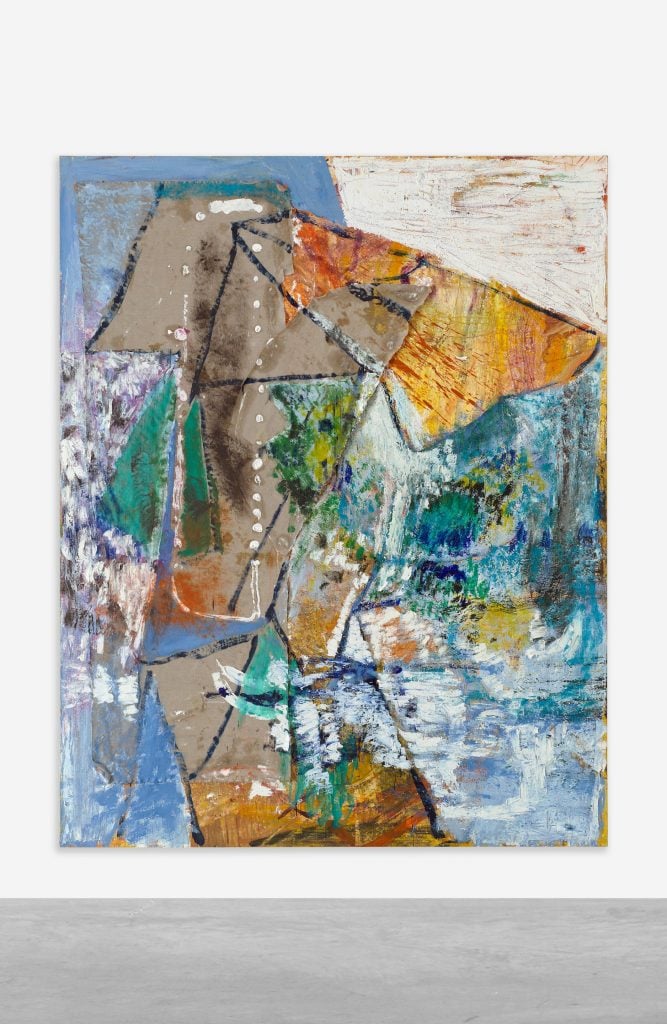
Pam Evelyn, Break Water. Courtesy of Peres Projects.
Pam Evelyn’s paintings are filled with phantom forms that make you look—and then look again. Something, maybe—or maybe not—just emerged in the corner of your eye. The images are abstract, in so much as Evelyn’s gestures create no final cohesive figure, but when you look closely, you will discern the shape of a table lamp, or perhaps a bent leg. The U.K. artist creates her works without premeditation; she is interested in the process of revealing what could be. The colorful and often joy-filled paintings offer clues, but let the viewer’s mind wonder at the possibilities.
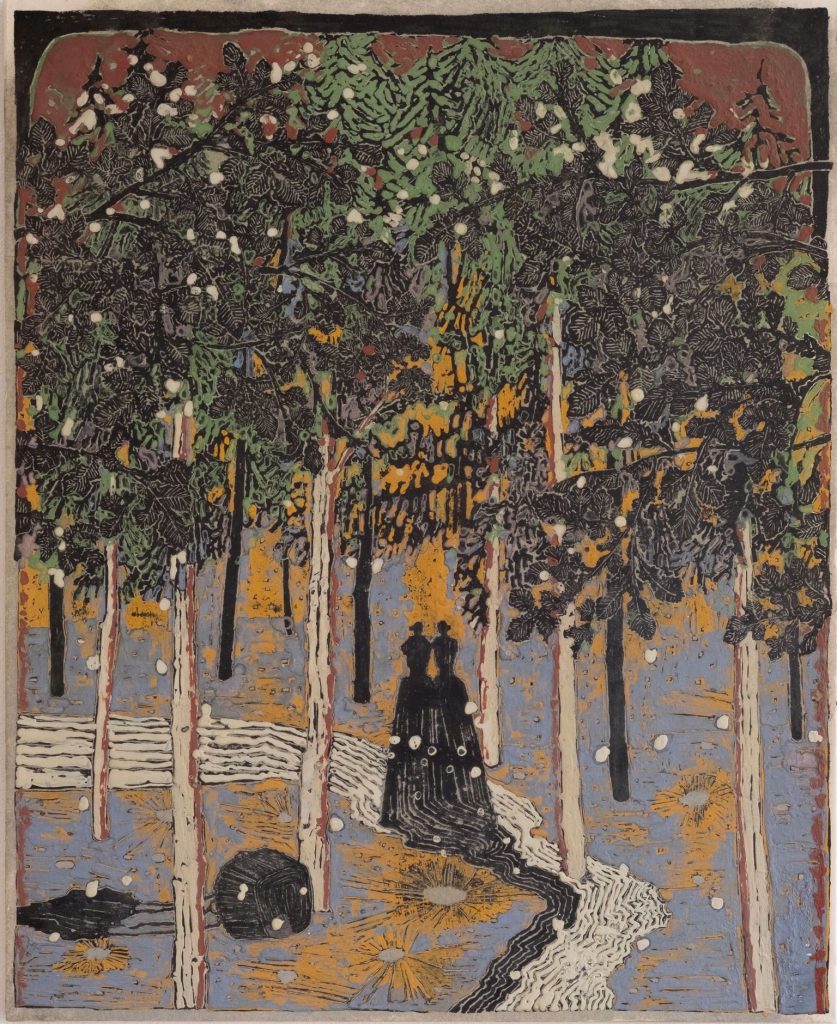
Toko Izumi, Goodbye My Oswald. Courtesy of Micheko Galerie.
Rising artist Toko Izumi practices a traditional Japanese style of painting called Nihonga. The term was defined during the Meiji period (1868-1912) as a way to distinguish itself from Western oil painting, and is characterized by the use of Japanese paper or silk with natural materials such as mineral pigments, sumi ink, and glue.
While rooted in these traditional techniques, Izumi’s works possess a striking depth created as she paints over, peels back and scratches her surfaces. Her motifs are heavily influenced by designs, textiles, and prints, and bring this historic style into an evocative, contemporary context.
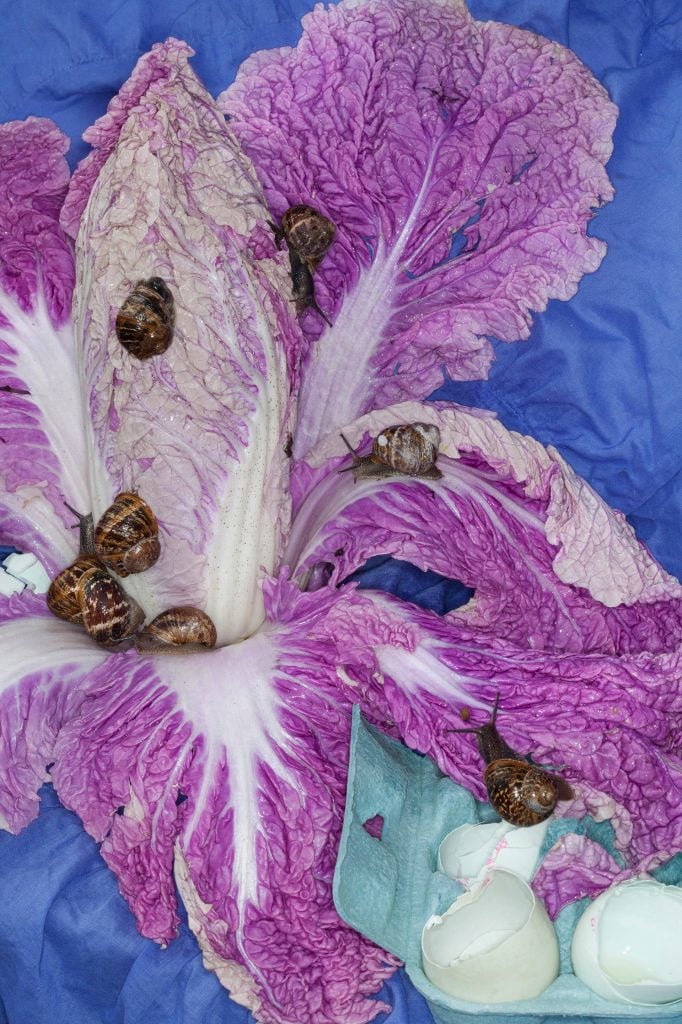
Maisie Cousins, Snails. Courtesy of Galeria Hilario Galguera.
London-based photographer Maisie Cousins is presenting her striking pictures in Latin America for the first time. At once beautiful and grotesque, Cousins hyper-saturated, glossy images often feature snapshots of the body, food, and trash, and the exhibition title translates as “Garden, Kitchen, Garbage, Body”. Her photographs visually meld the forms of these forever entwined ideas, pushing the boundaries of seduction and repulsion.
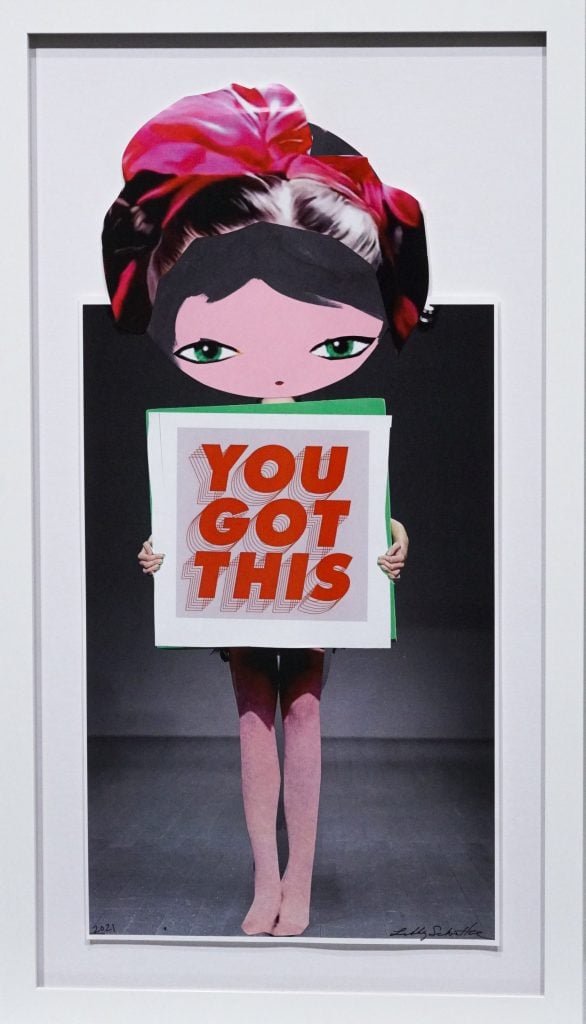
Libby Schoettle, You Got This. Courtesy of West Chelsea Contemporary.
Libby Schoettle is better-known by her street art alter-ego Phoebe New York, who has been pasting her cartoon-like bobblehead figures of women over Lower Manhattan for years. At her solo show at West Chelsea Contemporary, Schoettle displays her one-of-a-kind collages, each featuring a lone woman strutting against a background in shades of black, red, blue, and white.
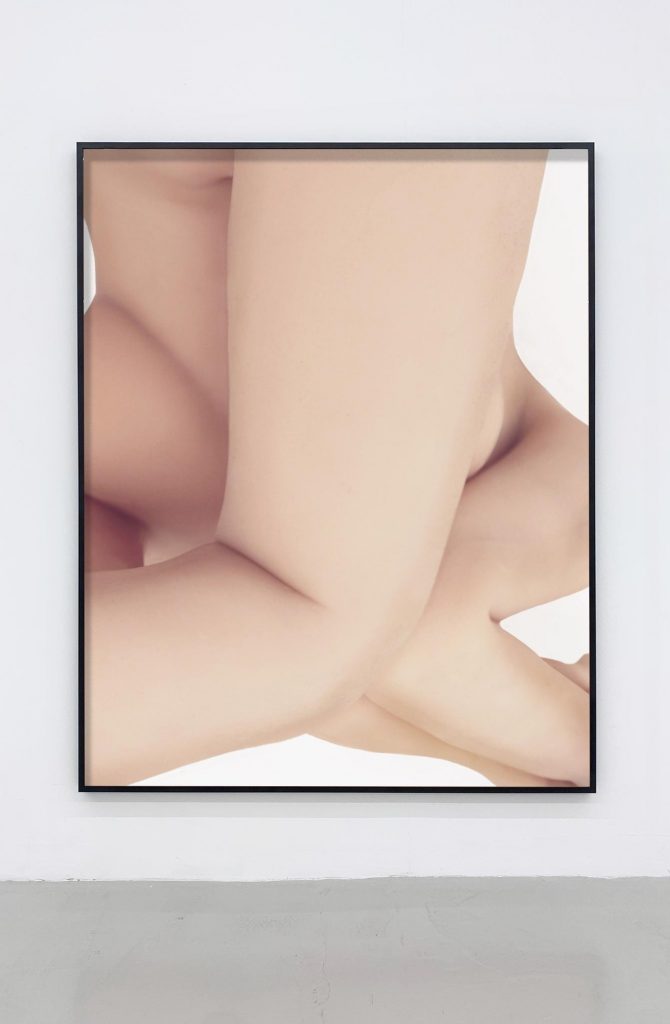
Louisa Clement, Body Fallacy 15. Courtesy of Cassina Projects.
German artist Louisa Clement’s first solo show, “Counterpain,” at Milan’s Cassina Projects, transforms the gallery into an eerie, dystopian world, through photography, video, and installation. A work called Representative is an avatar of the artist—an artificial clone made to simulate both Clement’s body and personality, which the artist created through a collaboration with scientists and a sex-doll manufacturer. With its disappearing divide between the real and the artificial, the exhibition explores a strange and seemingly inevitable future marked by trans-humanism.